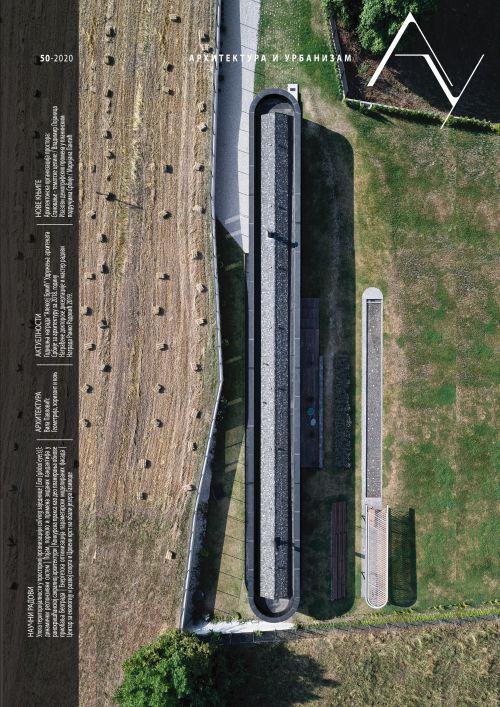Улога територијалности у просторној организацији coliving заједнице
english
Sažetak
Проблем истраживања је просторна организација coliving концепта становања и улога територијалности у њиховом типолошком одређењу. Досадашња истраживања coliving концепта нису резултирала њиховом јасном систематизацијом. Компаративном анализом карактеристичних примера може се констатовати да су у пракси заступљене све могуће релације између основних функционалних група (заједничких, дељених и индивидуалних простора), које међусобним повезивањем генеришу различите типове coliving концепата. Основна теза рада је да примарни параметар из кога проистичу различити концепти коегзистенције у дељеном простору чини „доживљај територијалности”, тј. ниво толеранције корисника и спремност за дељење истих простора и садржаја са непознатим особама. Основни допринос рада је дефинисање шест карактеристичних типова coliving заједница. Значај овог рада се огледа не само у иницирању могућности даљих теоријских истраживања у области становања, већ и у његовој практичној примењивости у просторној и функционалној организацији coliving и cohousing простора. Приказани концепти и класификација могу да послуже и као основ за дефинисање нових програма и пројектовање coliving објеката.
Reference
Ache, P., Fedrowitz, M. (2012). The Development of Co-Housing Initiatives in Germany, Built Environment 38/3, pp. 395–412.
Alfirević, Đ., Simonović Alfirević, S. (2019). Spatial Organization Concepts for Living Spaces with Two Centres, Spatium 42, pp. 1–7.
Bajić, T. (2010). Dom-komuna – stambeni eksperiment ruskog konstruktivizma, Arhitektura i urbanizam 30, str. 34–46.
Bamford, G. (2005). Cohousing for Older People: Housing Innovation in the Netherlands and Denmark, Australasian Journal on Ageing 24/1, pp. 44–46.
Bamford, G. (2004). 'Living Together on one's own': Cohousing for Older People - an Example from Denmark and The Netherlands. In: Proceedings from Queensland Shelter Housing Conference, Gold Coast, Queensland, 15-17 June, pp. 1–17.
Carswell, A. (2012). The Encyclopedia of Housing, Second Edition, Thousand Oaks, Sage.
Edney, J. (1974). Human Territoriality, Psychological Bulletin 81/12, pp. 959–975.
Efran, M., Cheyne, J. (1973). Shared Space: The Co-operative Control of Spatial Areas by Two Interacting Individuals, Canadian Journal of Behavioural Science / Revue canadienne des sciences du comportement 5/3, pp. 201–210.
Gifford, R. (1983). The Experience of Personal Space: Perception of Interpersonal Distance, Journal of Nonverbal Behavior 7/3, pp. 170–178.
Hall, E. (1966). The Hidden Dimension, Garden City, New York, Anchor Books.
Hoppenbrouwer, B. (2019). The Community Effects of Co-living: Exploring Opportunities for Dutch Developer-led Co-living in Fostering Community Building Among Residents, Master thesys, Nijmegen, Radboud University, Nijmegen School of Management.
Hudson, J. (2017). Senior Co-housing: Restoring Sociable Community in Later Life, In: Benson, M., Hamiduddin, I. (ed.) Self-Build Homes: Social Discourse, Experiences and Directions, UCL Press, pp. 157–173.
Kopec, D. (2010). Environmental Psychology for Design, New York, Fairchild Publications.
Mathisen, B. M., Kofod-Petersen, A., Olalde, I. (2012). Co-living Social Community for Elderly. In: Eichler, G., Wienhofen, L. W., Kofod-Petersen, A. & Unger, H. (ed.), Proceedings from 12th International Conference on Innovative Internet Community Services (I2CS 2012). Bonn, Gesellschaft für Informatik e.V., pp. 38–47.
Mercer, G.W., Benjamin, M.L. (1979). Spatial Behavior of University Undergraduates in Double-occupancy Rooms, Journal of Applied Social Psychology 9, pp. 32–44.
Osborne, R. (2018). Best Practices for Urban Coliving Communities, Master Thesis, Lincoln, University of Nebraska.
Pagh, C., Williams, J., Braskov, R. S., Christensen, C. V. (ed.) (2018). Imagine: Exploring the Brave New World of Shared Living, Copenhagen, Space 10, Urgent.Agency.
Schmid, S., Eberle, D., Hugentobler, M. (ed.) (2019). A History of Collective Living: Models of Shared Living, Basel, Birkhäuser.
Sorokowska, A., Sorokowski, P., Hilpert, Peter. (2017). Preferred Interpersonal Distances: A Global Comparison, Journal of Cross-Cultural Psychology 48/4, pp. 577–592.
Spencer, C., Banerji, N. (1985). Strategies for Sharing Student Accommodation: A Comparison of Male and Female Student Responses to Single and Shared Rooms, Architecture and Behavior 2/2, pp. 123–135.
Steding, D. (2019). Coliving: An Emerging Term Without a Common Definition, Master thesys, KTH, School of Industrial Engineering and Management.
Strube, M., Werner, C. (1982). Interpersonal Distance and Personal Space: A Conceptual and Methodological Note, Journal of Nonverbal Behavior 6/3, pp. 163–170.
Taylor, R., Fergusson, G. (1980). Solitude and Intimacy: Linking Territoriality and Privacy Experiences, Journal of Nonverbal Behavior 4, pp. 227–239.
Thomsen, J. (2008). Student Housing - Student Homes?: Aspects of Student Housing Satisfaction, PhD Thesys, Trongheim, Norwegian University of Science and Technology.
Vanazzi, L. (2019). Co-living: A Strategy for the Future City Housing, Master thesys, Politecnico di Milano, Scuola AUIC.
Vestbro, D. U. (ed.) (2010). Living Together – Cohousing Ideas and Realities Around the World, Proceedings from International collaborative housing conference, May 5-9, Stockholm, Royal Institute of Technology.
Vestbro, D. U., Horelli, L. (2012). Design for Gender Equality - The History of Cohousing Ideas and Realities, Built Environment 38/3, pp. 315–335.
Williams, Jo. (2005). Designing Neighbourhoods for Social Interaction: The Case of Cohousing, Journal of Urban Design 10/3, pp. 195–227.
Williams, Jo. (2002). Shared Living: Reducing the Ecological Footprint of Individuals in Britain, Built Environment 28/1, pp. 57–72.
Wood, H. (2017). Co-living 2030: Are you Ready for the Sharing Economy?, 28.12.2017., https://archinect.com/features/article/150042590/co-living-2030-are-you-ready-for-the-sharing-economy (приступљено 13.3.2020.)

